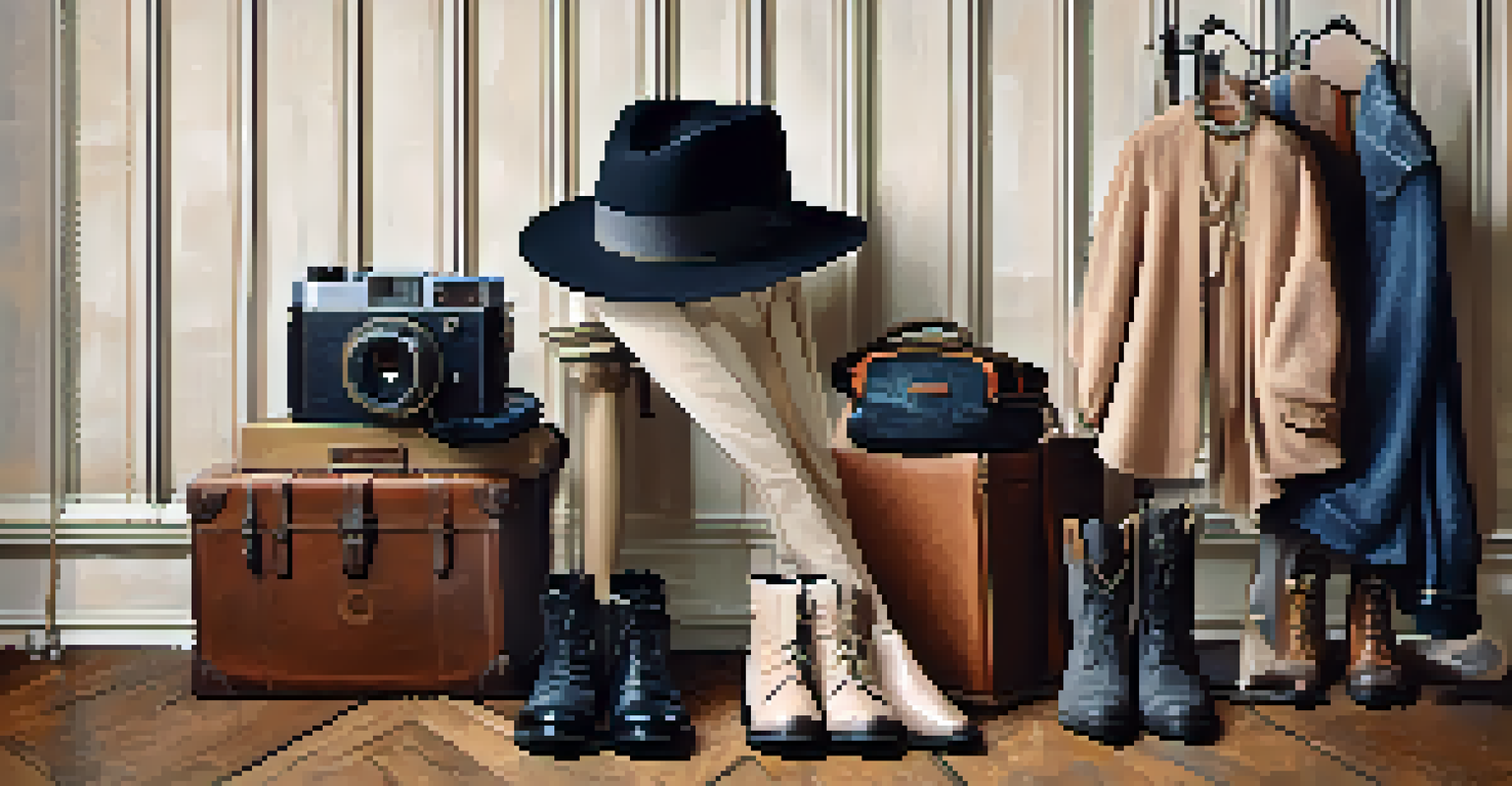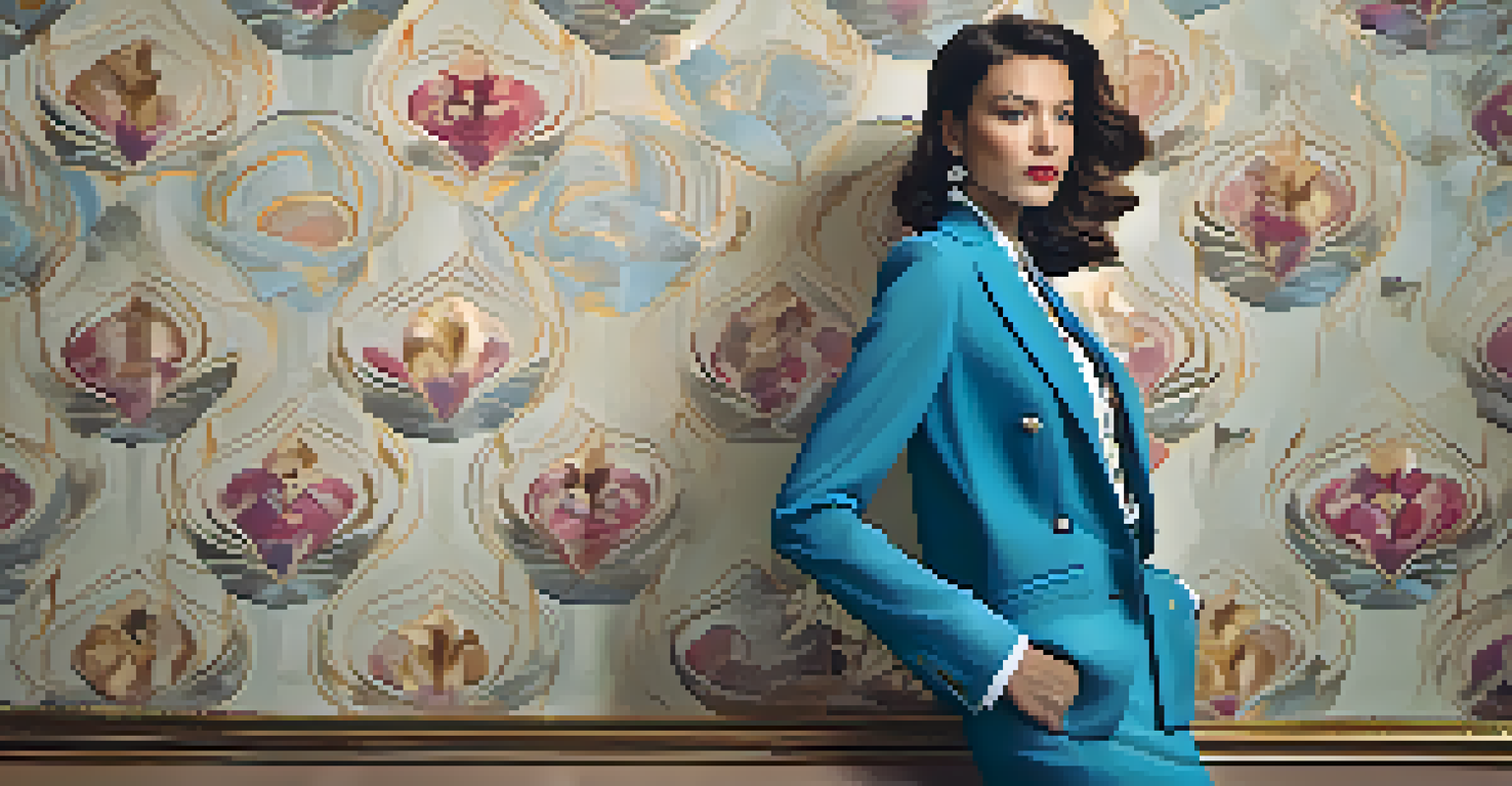Vintage Fashion and Gender: Breaking Traditional Norms

Understanding Vintage Fashion's Roots in Gender Expression
Vintage fashion is more than just clothing; it’s a vibrant expression of identity. Dating back to various eras, these styles often reflect the social norms and expectations of their time, particularly regarding gender. From flapper dresses of the 1920s to the androgynous looks of the 1970s, each piece tells a story about how society viewed gender roles.
Fashion is the armor to survive the reality of everyday life.
As we delve into these historical contexts, we see how fashion has been a powerful medium for self-expression, allowing individuals to navigate and challenge traditional gender norms. For instance, the rise of unisex clothing in the 1960s encouraged people to wear what felt right rather than conform to societal expectations. This liberation sparked a conversation about individual identity that continues to resonate today.
Ultimately, vintage fashion serves as a time capsule, showing us how far we've come in our understanding of gender. By revisiting these styles, we can appreciate the progress made and the ongoing journey toward inclusivity and acceptance in fashion.
The Role of Gender Fluidity in Vintage Styles
Gender fluidity, or the flexibility of gender identity, has found a welcoming home within vintage fashion. Many vintage styles blur the lines between traditional men's and women's clothing, allowing individuals to express themselves authentically. For example, the oversized suits of the 80s are now celebrated for their ability to empower anyone, regardless of gender.

This fluidity encourages people to experiment with their wardrobe, mixing and matching pieces that resonate with their personal style rather than adhering to gendered categories. Vintage clothing stores often showcase this idea, offering a range of options that invite exploration and creativity. It’s not uncommon to see a dress paired with combat boots, or tailored trousers with a flowing blouse, challenging the conventional notions of what is deemed appropriate.
Vintage Fashion Reflects Gender Identity
Vintage fashion serves as a powerful medium for self-expression, showcasing how societal views on gender have evolved over time.
Moreover, this trend towards gender fluidity is not just a passing phase; it's reshaping the fashion industry as a whole. More brands are recognizing the demand for non-binary options, inspired by the eclectic styles of the past, paving the way for a more inclusive future.
Iconic Vintage Figures Who Redefined Gender Norms
Throughout history, figures in vintage fashion have played pivotal roles in redefining gender norms. Think of iconic personalities like David Bowie, whose flamboyant style and gender-bending personas challenged societal conventions in the 1970s. Bowie's bold fashion choices inspired a generation to embrace their unique identities, proving that clothing can be a form of rebellion.
Clothes mean nothing until someone lives in them.
Similarly, artists like Grace Jones and Freddie Mercury used their platforms to push boundaries, showcasing how fashion could be both a personal statement and a political act. Their daring looks not only captivated audiences but also encouraged conversations about gender identity and expression in a way that resonated deeply with many.
These vintage icons remind us that fashion is inherently political. By challenging the status quo, they paved the way for newer generations to explore and express their gender identities without fear of judgment.
Sustainable Fashion: The Intersection of Vintage and Gender
Sustainable fashion is gaining momentum, and vintage clothing is at the forefront of this movement. Choosing vintage not only supports eco-friendly practices by reducing waste but also allows individuals to explore unique gender expressions. When you wear vintage, you’re not just making a fashion statement; you’re embracing a more sustainable lifestyle.
Moreover, vintage garments often carry stories and histories that new fast-fashion pieces lack. Each item has a past, offering a connection to different genders and identities woven into its fabric. This rich history can encourage wearers to reflect on their own identities and how they relate to the world around them.
Embracing Gender Fluidity in Style
The blending of traditional men's and women's clothing in vintage fashion encourages individuals to express their identities authentically.
As the fashion industry shifts towards sustainability, vintage clothing provides a treasure trove of options that challenge traditional gender norms while promoting a more mindful approach to style.
Social Media’s Impact on Vintage Fashion Trends
Social media has revolutionized the way we view and interact with vintage fashion. Platforms like Instagram and TikTok have given rise to a community of vintage enthusiasts who share their unique styles, often blending traditional pieces with contemporary aesthetics. This visibility encourages others to explore vintage fashion as a means of self-expression, regardless of gender.
The hashtag culture surrounding vintage fashion allows users to discover, connect, and support each other in their style journeys. This communal aspect fosters a sense of belonging and inspiration, where individuals can experiment with bold combinations that challenge gender norms. It’s fascinating to see how people interpret and personalize vintage styles in ways that resonate with their identities.
Furthermore, this digital engagement is helping to reshape the fashion narrative, advocating for diversity and inclusion. As more voices join the conversation, the definition of gender in fashion continues to expand, encouraging a more accepting environment for all.
Challenges in Vintage Fashion and Gender Identity
While vintage fashion offers a platform for expressing gender identity, it’s not without its challenges. Sizing can be particularly tricky, as many vintage pieces were designed with different body standards in mind. This discrepancy can make it difficult for individuals of varying sizes and shapes to find pieces that fit comfortably and align with their desired aesthetic.
Moreover, the perception of vintage fashion often leans towards a romanticized view of the past, overshadowing the struggles many faced regarding gender expression. Some may find that their unique style is not always accepted in mainstream vintage spaces, leading to feelings of exclusion. It’s essential for the vintage community to promote inclusivity and create safe spaces for everyone.
Social Media Shapes Vintage Trends
Platforms like Instagram and TikTok foster a vibrant community around vintage fashion, promoting inclusivity and diverse expressions of gender.
Acknowledging these challenges is crucial in moving towards a more equitable fashion landscape. By fostering discussions around body positivity and inclusivity, the vintage fashion world can continue to evolve, ensuring that everyone feels empowered to express their authentic selves.
The Future of Vintage Fashion and Gender Norms
As we look to the future, the relationship between vintage fashion and gender norms promises to grow even more dynamic. With a rising awareness of gender identity and expression, more designers are likely to draw inspiration from the past while challenging existing norms. This fusion can lead to innovative styles that honor vintage aesthetics while embracing contemporary ideals of inclusivity.
Furthermore, as consumers become more conscientious about their fashion choices, the demand for vintage and second-hand clothing is expected to rise. This shift not only supports sustainability but also opens up new avenues for exploring gender expression through fashion. The more we embrace vintage, the more we celebrate our diverse identities in a meaningful way.

Ultimately, the future of vintage fashion holds the potential for a more inclusive and expressive society. By continuing to challenge traditional norms, we can pave the way for a world where everyone feels free to showcase their unique style without boundaries.